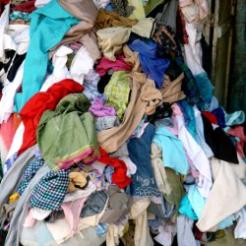Charities are likely to lose tens of millions of pounds this year from a fall in the price of recycled clothing and other textiles, known as rag.
Charities sell hundreds of thousands of tonnes of rag each year – mostly clothing collected from donors which are not deemed suitable for sale in shops.
The rag price in 2013 was around £600 a tonne, but it has dropped by £200 a tonne since January, according to figures from the Textile Recycling Association, the body for the industry. The association believes the price could still fall further.
Respondents to this year’s Charity Shops Survey, published jointly by Charity Finance and Fundraising magazines, reported an income of £85m from the sale of rag in the year to March 2014. These organisations represent around half the charity shops in the UK, and most of the largest retailers. Rag sales make up around a tenth of their income.
The largest seller of rag in the charity sector is the Salvation Army. The charity earned £31m last year from the sale of rag, following its acquisition of Kettering Textiles, a collection company which previously had a deal to collect from Salvation Army clothing bins and pass on a share of the profits.
Excluding the Salvation Army figures, which are not comparable to last year because of the acquisition, income from rag sales dropped by around 4 per cent last year.
These figures suggest the sector as a whole received well over £100m from rag sales in the year.
The fall in the rag price is largely down to changes in two of the main markets for British recycled clothing; West Africa and the Ukraine. Both of these markets have been hit with instability recently.
In addition, the price has been hurt by the pound strengthening against foreign currencies after a long period of weakness dating back to the start of the recession. This is likely to increase if interest rates rise in the near future.
“Going forward, business plans should try not to take into account the income from the sale of used clothing,” said Alan Wheeler, director of the Textile Recycling Association.
“That is not to say that we expect prices to hit rock bottom, but if a robust plan can be put in place that takes account of income from a variety of other streams, then any income from the sale of used clothing will be a welcome bonus.”
- This year’s Charity Shops Survey will be published in October, and will be distributed with copies of Charity Finance and Fundraising magazines. Click here to pre-order your copy.









